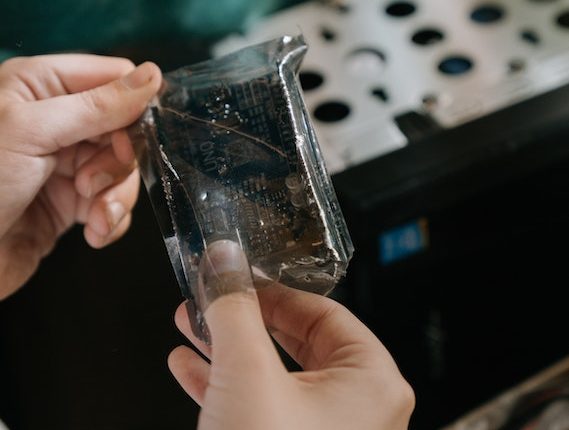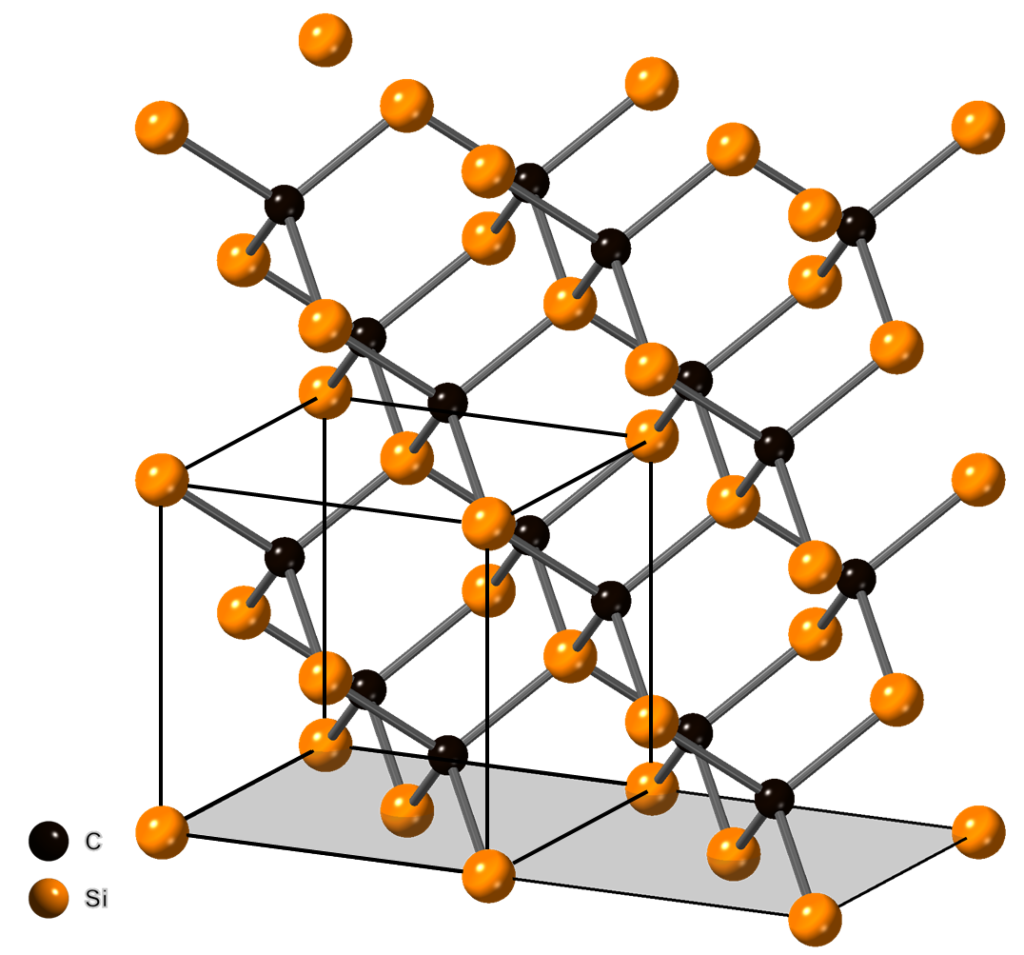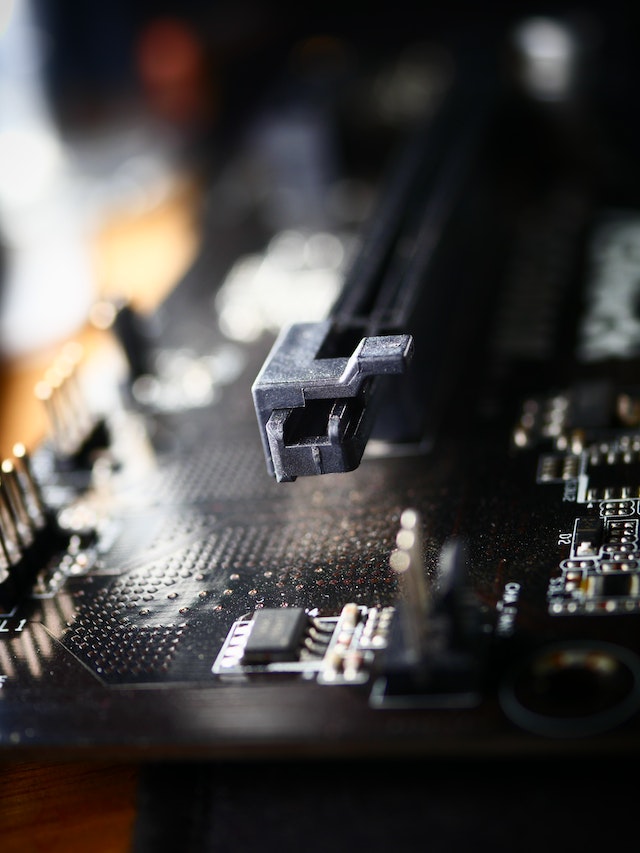Understanding Indium Phosphide and its Role in Semiconductors
The binary semiconductor, indium phosphide (InP), stands as a cornerstone in the creation of optoelectronic devices such as light-emitting diodes. Its extraordinary electron transport properties position it to be the material of choice for high-speed and high-frequency electronics. The utilization of InP is pivotal due to its direct bandgap and exceptional electron mobility, thus ensuring superior performance when used as a base substance in semiconductors.

By introducing impurities into the semiconductor via a process known colloquially as doping, one can alter the characteristics inherent to an InP-based device. Zinc emerges often in this role due to its ability to create p-type materials that boast remarkable electronic traits. As zinc-doped InP forms a thin film across these devices’ layers, it boosts their efficiency by enhancing charge carrier transportation.
Indium Phosphide truly shows off its potential within quantum-dot light-emitting diodes among other applications; thanks primarily to its unique quantum dot structure alongside an innate capability for efficient light emission upon recombination of charged particles. Through X-ray investigations unveiling how structural defects influence device performance, manufacturers find themselves equipped with knowledge crucial for refining production processes towards improved device outcomes.
The Science Behind Doping in Indium Phosphide-based Devices
The intricate process of doping, a pivotal component in the cultivation of indium phosphide-based devices, involves the introduction of impurities or dopants into an otherwise pure InP semiconductor. This manipulation serves to alter its electrical properties. Zinc is most frequently employed as a dopant for InP due to its capacity to donate holes – essentially electron deficiencies – into the crystal lattice structure thereby enhancing p-type conductivity. It’s noteworthy that this act of doping not only augments charge carrier density but also enhances device performance.

Indium Phosphide has attracted significant attention as a material with particular relevance in optoelectronic applications such as light-emitting diodes and quantum dot (QDs) based devices. These QDs, which are essentially diminutive semiconductors, possess energy levels that can be influenced by altering their size and shape through various doping processes. When amalgamated with Indium Phosphide, these minute quantum dots display distinctive photoluminescent attributes thus making them perfectly suited for application in light-emitting diode technology.
Moreover, thin film technology plays a substantial role in augmenting both efficiency and functionality of InP-based devices. A layer of thin film functions as an intermediary between the active region where electron-hole recombination occurs and external circuitry thereby ensuring efficient current flow across device structures while simultaneously suppressing leakage currents. Consequently, comprehending how doping impacts thin films derived from Indium Phosphide is integral for optimizing electronic along with optoelectronic applications.
Characteristics of Light-Emitting Diodes Made from Indium Phosphide
Surrounded by an aura of deep scientific intrigue, Indium Phosphide (InP) based Light Emitting Diodes (LEDs) have been thrust under the microscope of intensive research. Their enticingly unique characteristics and tantalizing potential applications in optoelectronic devices stimulate this persistent curiosity.
Venturing into the realm of fabrication, we encounter a process brimming with complexity. Here, nanoparticles of InP emerge through synthesis before undergoing annealing to morph into high-quality n-type semiconductor material. This forms the foundation for our LED structure while an electrode layer is seamlessly integrated to facilitate efficient electron transport.
The band gap energy within these enigmatic InP-based LEDs holds secrets that can be decoded during synthesis via careful manipulation of nanoparticle size – a thrilling example of science at its most intricate. As such, emission wavelengths dance across a vast spectrum as they adjust to varying sizes; indicative of the versatility these LEDs possess when applied in numerous contexts.
Quantum efficiency further contributes to the suspense surrounding these LEDs’ performance parameters – significantly boosted by this innovative approach. The integration of quantum dots or QD’s provide another exhilarating twist in our tale as it leads directly towards achieving high-efficiency light emissions within InP-based LEDs.
X-ray investigations unravel yet more mysteries about their internal structures and electron behavior under shifting conditions. For instance, doping with Zinc Oxide (ZnO), typically cast in an n-type dopant role, seems not only capable of altering electrical properties but also influencing optical traits like emission intensity and wavelength stability over time.
These revelations serve as stark reminders about why diligence matters when selecting materials and honing processing techniques during fabrication stages – all critical components necessary for constructing high-performance optoelectronic devices from Indium Phosphide.
Quantum-Dot Light-Emitting Diodes: An Overview
The subject of intense scrutiny and study, Quantum-dot light-emitting diodes (QLEDs) hold the key to potential applications in optoelectronic devices. They depend on quantum dots – minute particles, typically less than 100 nm across, within a semiconductor device.
These InP-based quantum dots boast unique properties resulting from the confinement of an electron and hole within their nano-measurements. This restrictive environment gives rise to quantized energy levels that create a broad spectrum of emission colors which can be tuned effortlessly by tweaking the size or composition of said dot.
Optimization is often achieved via doping – introducing impurities into semiconductors. Zinc is frequently employed as an efficient dopant due to its propensity to enhance performance through improvements in charge injection and transport mechanisms.
A noteworthy mention goes out to colloidal methods; often used for synthesizing high-quality InP-based quantum dots with optical properties like high external quantum efficiency and good quantum yield that are second-to-none.
X-ray diffraction techniques offer deeper understanding regarding structure-property relationships intrinsic these materials. Tin oxide’s significant contribution towards enhancing stability while maintaining optimal external quantum efficiency values for QLEDs based on InP/ZnSe core/shell nanocrystals cannot be understated.
In conclusion, gaining insights into these fundamental aspects will aid in devising strategies tailored specifically towards optimizing QLED performance even further thus paving way for commercialization down-the-line.
Thin Film and its Importance in InP-based Devices
In the realm of InP (Indium phosphide) based devices, thin films are often employed to bolster performance and efficiency. A broad spectrum of synthesis methods exists for these thin films, including metal organic chemical vapor deposition. Their fundamental role lies in amplifying the electron transport layer within such devices.
This enhancement sets off a rise in current density, thus refining the overall functionality of applications based on InP – particularly those in optoelectronic and display sectors. The process’s intricate nature incorporates levels of doping within the InP substrate itself.
An intriguing aspect is what emerges during synthesis when zinc oxide is introduced – a quantum well structure unfolds. This newfound presence restructures the energy level distribution within the device, paving way for efficient operation. Esteemed sources like Journal Of Physical Chemistry have delved into how manipulating these doping levels can be instrumental to enhanced performance across an array of semiconductor devices.
Thin film layers are not merely influencing energy levels via their roles in doping processes; they also serve as ohmic contacts linking different components inside an electronic device. These ohmic contacts maintain smooth electrical currents flow between various parts without any unwanted interruptions or resistance hikes – a trait that gains immense importance with complex structures akin to those discovered inside InP QDs (quantum dots).
With this insight, it becomes evident that thin film technology carries profound implications extending beyond just InP-based electronics potentially into all areas where semiconductors find use due its potential to both amplify conductivity and boost operational efficiency overall.
Role of Zinc in Doping Process and Its Effect on Device Performance
The inception of Zinc into the formative sequence of Indium Phosphide (InP) bestows a deep-seated impact upon its electronic band constitution and thus, on gadget efficacy. The technique for this synthesis encompasses the integration of zinc at reduced degrees during the construction of InP-based quantum dot luminous diodes. This instigates a transition towards expanded energy vacuums, thereby manipulating the quantum confinement effect discerned within these constructs.
Moreover, phosphorus origin plays an indispensable role in such process that facilitates proficient configuration formation of InP NWs. The participation by Zinc is also discernible from SEM images gleaned through field emission scanning electron microscopy which unveils considerable morphological transformations due to high levels of zinc integration during large-scale synthesis operations.
Furthermore, particles below 20 nm demonstrate amplified quantum confinement impacts which further augment their latent capacity for application in optoelectronic apparatuses. Studies too have pointed out that doping with zinc escalates both internal quantum efficiency and energy conversion efficiency in devices constructed from doped InP substances.
An alternative methodology involving Zinc can be investigated further to optimize these efficiencies concurrently maintaining command over size dispersion and concentration parameters – vital elements influencing overall gadget performance.
X-Ray Investigation of InP-based Electronics
The intricate dance of X-ray probing in the realm of Indium Phosphide-based (InP) electronics has proved a potent catalyst in propelling solar cell efficiency to new heights. This investigative ballet twirls its spotlight primarily on the surface topography of InP, a crucial factor that choreographs its performance as a semiconductor material. Reactive Ion Etching (RIE), an etching maestro conducting nano-fabrication symphonies, is also under this method’s scrutinizing gaze. This observational odyssey gifts researchers with deep-dive insights into band gaps and fundamental physical properties – these unseen puppeteers pull the strings behind the functioning curtain of such devices.
The relentless pursuit for development and progress birthed marvels like InP-based quantum dots, further sensitized by higher band gap semiconductor quantum dots. These microscopic specks boast large direct band gaps, creating an insatiable light absorption capacity surpassing traditional materials – thereby turbocharging power conversion efficiency significantly. The crowning moment arrives when these quantum dots are seamlessly woven into photovoltaic tapestry; their maximum external quantum efficiency unveiled through diligent dissection under X-ray investigation.
Moreover, studies have shown that doping – purposefully sprinkling impurities into mix – can play god with these gaps and fundamental physical properties; it’s akin to transmuting lead into gold while crafting specific electronic attributes for semiconductors. For instance, integrating zinc during this alchemical process allows one to tailor electrical characteristics at will according to preferred specifications. The interplay between InP NWs (nanowires) and higher band gap semiconductor quantum dots too hasn’t escaped X-Ray’s all-seeing eye; thus shedding vital light on their structural integrity under diverse conditions.
Optoelectronic Devices: The Application of Indium Phosphide
Indium Phosphide (InP) is a gemstone in the field of optoelectronics, boasting an array of unique characteristics that imbue it with immense potential. This extraordinary compound semiconductor material sits at the heart of high-speed electronics and photonics technologies development, its direct bandgap and superior electron mobility properties serving as its crown jewels.
The realm of InP-based materials such as indium tin oxide and InP-GaP nanowires has experienced a significant expansion due to relentless efforts into their synthesis. As a result, these exciting advances have amplified the spectrum of possible applications across various domains.
One notable application that underscores Indium Phosphide’s versatility relates to Quantum-Dot Light-Emitting Diodes (QLEDs) – specifically red InP QLEDs. These remarkable devices are celebrated for their stellar display technology performance. They harness the quantum confinement effect with precision, manipulating emission wavelengths and enabling vivid hues like red and green to be produced at unprecedented efficiency levels. Additionally, research insights hint towards incorporating QDs into display applications revolutionizing screen technology by offering heightened color accuracy along with energy efficiency unparalleled by traditional LED displays.
Another key arena where Indium Phosphide shines brightly lies within components operating around 1.5 μm telecommunication wavelengths – this is indeed pivotal for today’s electronic communication systems infrastructure. Given these impressive attributes, one can confidently predict that ongoing advancements will only serve to deepen our understanding about this intriguing material while simultaneously pushing new boundaries in optoelectronics sphere.







Comments are closed.